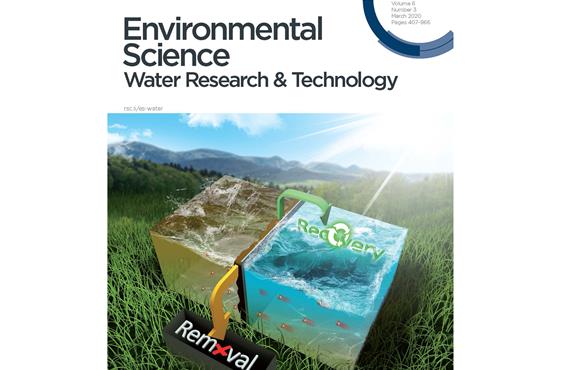Forward osmosis could be alternative wastewater treatment method
Forward osmosis could be a less-costly technology that could be used to remove salts and other contaminants from wastewater, according to new research by McKelvey engineers

Orange County, California, uses a reverse osmosis and microfiltration system to further purify wastewater for recharging deep aquifers that are sources for clean drinking water for its 2.5 million customers. Reverse osmosis is a widely-used practice worldwide for desalination and wastewater recycling in areas where clean water is scarce, but it's an expensive system, both in cost and in energy consumption. An environmental engineer from Washington University in St. Louis suggests that forward osmosis could be an emerging less-costly technology that could be used to remove salts and other contaminants from wastewater.
Zhen (Jason) He, professor of energy, environmental & chemical engineering in the McKelvey School of Engineering at Washington University, and Matthew Ferby, a doctoral student in his lab, analyzed the feasibility of using forward osmosis as an alternative wastewater treatment method in a paper published in and featured on the cover of Environmental Science Water Research & Technology March 5, 2020.
Forward osmosis uses natural osmotic pressure created by a concentrated solution such as fertilizer, salts or sugar solutions as the power to extract high-quality water from wastewater with a membrane as an effective barrier to prevent contaminants from entering the extracted water. However, first they must reduce reverse solute flux, an overlooked process in which the concentrated solute flows back through the membrane into the treated wastewater. Negative effects of reverse solute flux include decrease in water flow, increase in operational costs due to loss of solutes, and accumulation of salts.
"Reducing reverse solute flux is critically important to forward-osmosis operations," He said. "We have to figure out a way to reduce this migration and to deal with whatever contaminants already moved back to the feed solution."
To find an answer to this problem, Ferby is studying three methods: physical separation, chemical precipitation and biological removal, though each has limitations.
"We know that no matter how perfect our method is, there will still be some solutes that will get through, so we are looking at other possibilities: Can we recover and turn those contaminated solutes into useful compounds for reuse?" He said.
This recovered water could be used for lawn care, irrigation and other purposes for which clean drinking water is not necessary, He said.
Ferby M, Zou S, He Z. Reduction of reverse solute flux induced solute buildup in the feed solution of forward osmosis. Environmental Science Water Research & Technology. Published online Dec. 4, 2019, in print March 5, 2020. DOI: 10.1039.c0ew00775j.
Funding for this study was provided by New Horizon Graduate Fellowship (Ferby) and Water INTERface IGEP (Zou), both from Virginia Tech.





